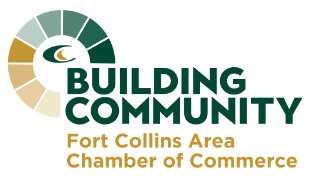Sustainable Funding – January 2023
The Fort Collins City Council just recently adopted the largest budget in City history, including accessing reserves to fund ongoing expenses. Despite that strong community action, it has become apparent that we have failed to set aside adequate reserves to properly maintain, repair and replace certain community assets, and have limited methods for covering the cost of implementing ambitious strategic plans. As of this writing the long-term revenue shortfall is estimated to be $40M-$48M per year.
How did we get here?
Two primary drivers are evident: Capital assets are often acquired and/or constructed through non-recurring revenue sources, such as the dedicated ¼ cent capital improvement tax (Building on Basics, et al) and one-time development fees, with no reserve provision for maintenance or eventual replacement. As well, it has become customary for City Councils to adopt visionary plans that establish goals with no consideration of how implementation will be funded.
Much of the conversation to date has focused on attacking the revenue side of the equation – raising/extending taxes, increasing one-time fees and usage charges, creating whole new categories of fees and sin taxes, exactions upon disfavored industries and more.
Putting context to the dilemma, the Parks & Recreation Department estimates they will need over $12M per year over the next 10 to bring facilities up to current standards and install more efficient equipment. In the adopted 2023 budget, the Cultural & Recreation service area is allocated $42M, of which Parks & Rec is only a subset. This means a 29% bump for an entire service area just to fix our parks and trails.
In order to fulfill objectives established under the Transportation Master Plan, which calls for greatly expanded transit service, an additional $8M will be needed every year. This equates to a 11% increase to the entire Transportation & Mobility service area budget. Increased ridership projections now seem highly speculative given the financial difficulties of even the largest, most efficient operators across the country and the changed behavior of riders.
Additionally, at its December 6 meeting, Council adopted an Active Modes Plan. Among the stated goals is to shift 50% of all trips within the city to walking, biking or electric scooter by 2032. To do this, our entire transportation network must be reimagined with new facilities and safety features. The projected cost for the plan is $159M over the next 10 years, or an additional $16M per year. Transportation Services will require an additional $24M each and every year, a 33% increase to that service area budget.
Under the Housing Strategic Plan, the City seeks to increase the inventory of rental properties that are considered affordable to households at or below 60% of area median income (~$46k/yr) from 5% of our current stock to 10% by 2040. This equates to 282 new rental units every year. Through 2021, the average increase has been closer to 100 units per year. The plan suggests this can be achieved with an additional $10M each year to supplement the $1.5-$3.0M annual investment that largely derives from the federal government. The plan further notes the need for an additional allocation of $27M just to catch up with an existing shortfall of housing called for within the 2015-2020 planning cycle.
Admirable though it may be, there are two significant defects with the strategy: financing and capacity. Financing housing that can be made affordable at below-market rents requires extensive use of federal and state resources, primarily low-income housing tax credits. Those resources are both finite and highly competitive and will not automatically flow to Fort Collins simply because we have adopted a plan. There are 222 other local jurisdictions in the state with their own plan and their own housing shortages.
Even with the newly adopted land development code, which streamlines the process for increasing our housing stock, availability of suitable land and the ability of the market to both produce and absorb 282 income-restricted housing units every year tests even the most optimistic among us. Were it feasible, the City would need to find approximately $45M per year to backfill the need for project subsidies.
The final of the four identified objectives in need of additional funding is Our Climate Future, formerly known as the Climate Action Plan. Originally adopted in 2015, the plan set out a goal to achieve 100% carbon neutrality by 2050 with interim greenhouse gas emission reduction benchmarks by 2020 and 2030. Council recently established another interim goal by 2026. Heavy on assumptions of technological advancement, energy source conversion, efficiency gains, and modification of consumer behavior, associated costs were never outlined owing to the speculative nature of how and when assumptions might align. Better cost estimates would be provided as individual projects were proposed. Anecdotally, educated guesses at the time of the original adoption suggested a price tag well north of $1B, not counting costs borne within the private sector.
Individual project cost estimates continue to be elusive even as tactics have been implemented. Utility rates and impact fees have increased considerably since plan adoption, as have building, development and air quality standards, among other cost-shifting strategies. Nonetheless, City staff is suggesting the need for an additional $7M per year to achieve Our Climate Future objectives.
At what point do we start the hard conversations around our collective definition of Wants and Needs? We invite you to join us at our next CIVIC Conversation on January 16 to dive deeper into this important community conversation. Is it time to start dialing back our expectations of what should be provided by our local government and what is best left to the private sector, philanthropy, and the serendipity of a remarkable community? We want your voice.
Source: Fort Collins Area Chamber of Commerce
January 4, 2023
